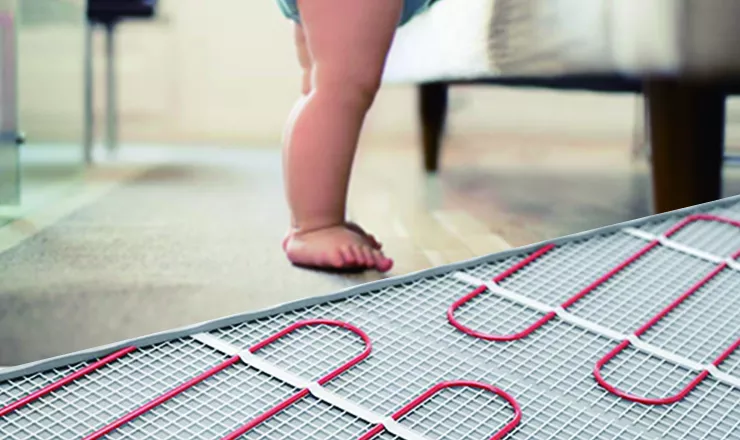When it comes to installing underfloor heating in your home, there are three primary methods to consider: in-slab, in-screed, and under-tile. Each method has its own unique benefits and considerations, making it essential to understand the differences before making a decision. Let’s take a friendly and natural approach to understanding these options so you can choose the one that best fits your home’s needs.

In-Slab Installation
In-slab installation involves embedding the heating elements directly into the concrete slab that forms the floor of your home. This method is often chosen for new construction projects.
Benefits of In-Slab Installation:
– Uniform Heat Distribution: The heat is evenly distributed across the entire floor surface.
– Aesthetics: There are no visible heating components, maintaining a clean and uninterrupted floor design.
– Energy Efficiency: The concrete stores heat well, which can lead to energy savings.
Considerations:
– Construction Timing: The heating elements must be installed during the pouring of the concrete slab, which requires careful planning.
– Repairs: If a repair is needed, it can be more invasive due to the concrete covering.
In-Screed Installation
In-screed installation is similar to in-slab but involves placing the heating elements between two layers of sand and then covering them with a thin layer of cement screed. This method is also common in new builds or during major renovations.
Benefits of In-Screed Installation:
– Faster Heat-Up Time: The thinner layer of material above the heating elements allows for quicker heat distribution.
– Easier Repairs: Accessing and repairing the heating elements can be less disruptive than with in-slab installation.
Considerations:
– Substrate Requirements: A solid and level substrate is needed to ensure the screed layer can be applied properly.
– Height Impact: This method may slightly increase the overall floor height due to the additional screed layer.
Under-Tile Installation
Under-tile installation is a versatile option that can be used for both new constructions and retrofit projects. The heating elements are placed on top of an insulating layer and then covered with tiles.
Benefits of Under-Tile Installation:
– Flexibility: Suitable for a wide range of floor types and can be installed over wooden or concrete subfloors.
– Easy to Install: The heating elements can be laid out quickly, similar to the process of laying tiles.
– Tile Choice: You have the freedom to choose from a variety of tile types and designs.
Considerations:
– Heat-Up Time: Tiles can take longer to heat up compared to other floor coverings due to their thermal mass.
– Insulation Importance: Proper insulation is crucial to prevent heat loss from the underside of the floor.
Making Your Decision
When choosing between in-slab, in-screed, and under-tile installations, consider factors such as your home’s construction stage, the type of flooring you prefer, and your long-term maintenance and repair preferences. It’s always a good idea to consult with a professional who can provide personalized advice based on your specific situation.
Underfloor heating is an excellent way to add comfort and value to your home. Whether you opt for in-slab, in-screed, or under-tile installation, you’re making a smart choice for a warmer and more energy-efficient living space. Take the time to explore each option and choose the one that aligns best with your home’s needs and your personal preferences. With the right installation method, you’ll enjoy the benefits of underfloor heating for years to come.





